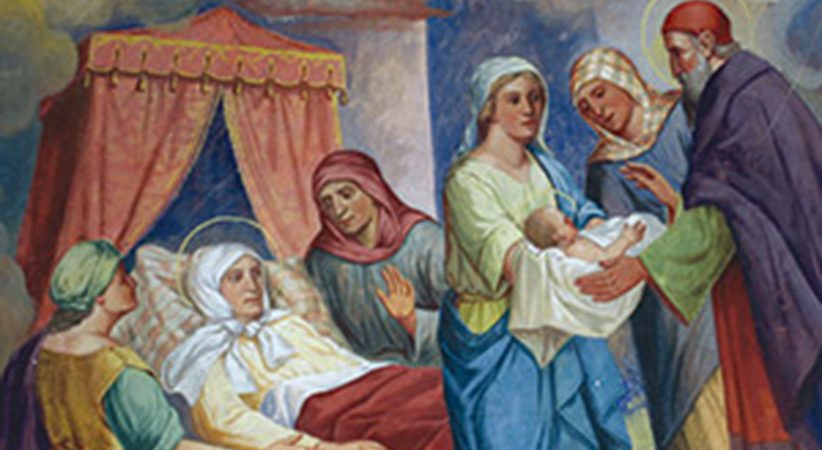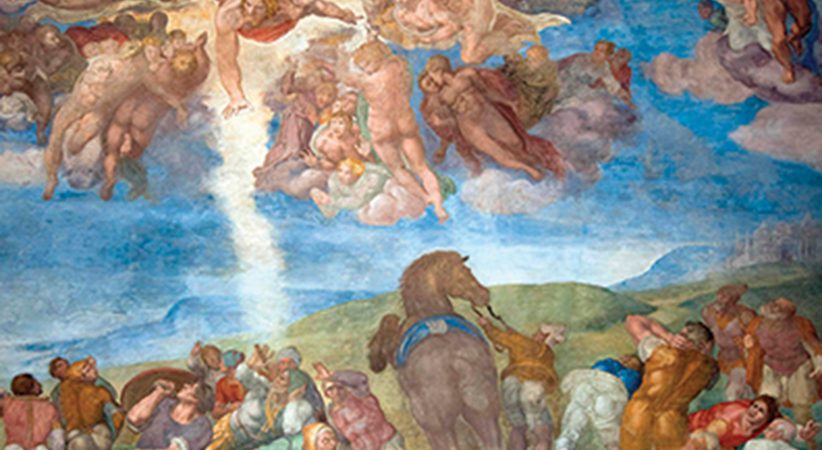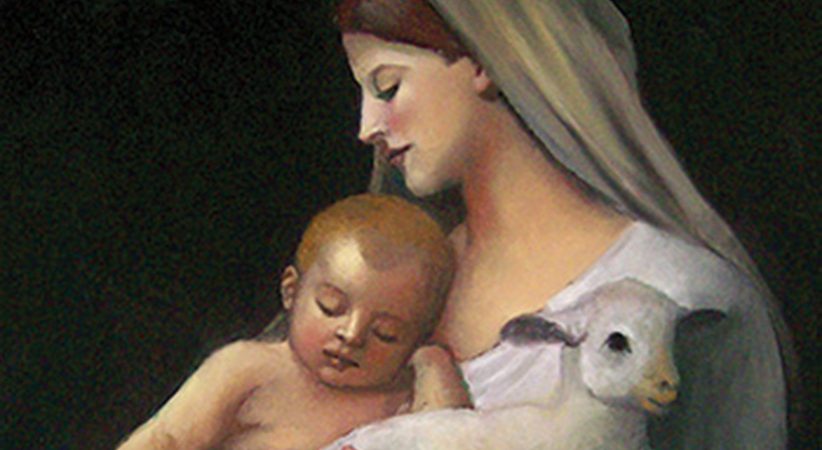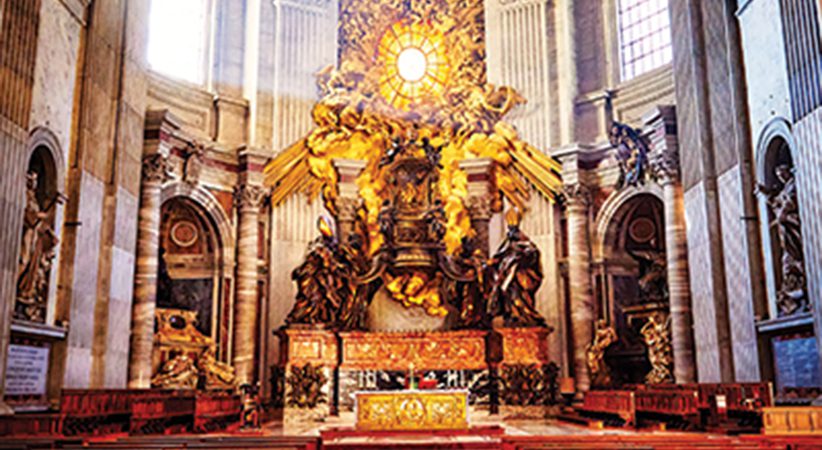Nativity of the Virgin Mary
Another gift preceded God’s gift of His Son
Father John Singarayar 1
The universal Church celebrates the birthday of Blessed Virgin Mary, the Mother of Jesus. There is of course, no record of when Mary was born, but the mere fact of her birth calls for celebration. In fact, God’s gift of His Son to humankind had to be preceded by another precious gift — the gift of the Mother of His Son.
The Bible offers a few details of Mary’s earthly life. These details exclusively concern her unique place in God’s plan of salvation. It is but natural that from early times more detailed information was sought about Mary’s life. Many such details are narrated in the Protoevangelium of James. This ancient writing may contain historical elements, but the image of Mary presented there is that of a child prodigy.
This tendency to supernaturalize Mary’s earthly life continued through the centuries. Legends added to the biblical accounts fill up the sober silence of the Gospels. These legends tended to remove Mary from the earthly sphere of our human life, totally opposite to the Bible where Mary appears first as the guarantee of Jesus’ true humanity: “born of a woman” (Gal 4:4).
‘Maximalists’ and ‘Minimalists’
During the decades before the Second Vatican Council, the mariologists were divided into two camps: “maximalists,” who claimed many prerogatives for Mary, and critical “minimalists,” who tended to underrate Mary’s unique place in the Church. It is important to strike a sober balance between extreme forms of devotion and neglect of Mary in Christian life, but also, based on the Bible, to free the image of Mary from Gnostic spiritualization and to see to it that her life and mission are integrated into the mystery of salvation, into the life and mission of Jesus and the Church.
In his Gospel, Matthew (Mt 1:1-16, 18-25) follows the pattern “A begot B” for every birth in the list, except for the birth of Jesus. In 1:16, he writes: “Mary of whom was begotten Jesus.” Instead of, “Joseph begot Jesus by Mary.”
| Praying with Mary |
|---|
|
Why praying the Rosary is more |
Matthew includes in the genealogy of Jesus the names of Tamar, Rahab, Ruth and Uriah’s wife, besides the name of Mary. In the first century, it was unusual to mention the names of women in genealogical lists. For this reason, several motives can be adduced as an explanation: a.) The inclusion of these women in the genealogy shows that the Gentiles or the foreigners have also been prepared for the birth of the messiah, therefore their savior, too. b.) These four women were sinners in so far as they seduced others to commit sin. Inclusion could have been also Matthew’s apologetic stand against the Jews who might have accused Mary of sinful behavior. c.) These four women, marked by irregular marital unions, were vehicles of God’s messianic plan. In this way Matthew is calling attention to Mary who became an instrument of God’s providence in the messianic plan by conceiving Jesus in a wonderfully irregular way.
In the second part of the Gospel (1:18-25), Matthew explains the virginal conception of Jesus against the background of Jewish marriage customs. There were two stages for the Jewish marriage: erusin, the betrothal, and nisu’in, the formal taking of the wife by the husband into his own house. From this moment he assumes the responsibility of supporting his wife.
House of David
In the infancy narrative, Matthew tells us that Mary’s pregnancy took place between the two stages of Jewish marriage, and that it was through the Holy Spirit. Joseph suspected her of adultery, and being a just man, chose a lenient way of action by thinking of divorcing her. But then an angel appeared to him in a dream and clarified the mystery of her pregnancy.
The angel then asked Joseph to go on with the second stage of his marriage and to name the child “Jesus” when he was born. Thereby the evangelist shows Jesus to be a true son of David through Joseph, and Son of God through the virginal conception by Mary. Thus, Matthew shows Mary as playing an important role in God’s plan of saving his people; she was even foreseen from the time of Isaiah as the virgin who would conceive and give birth to Emmanuel.
Thus, the infancy narrative in Matthew shows the firm conviction of the evangelists, as well as that of the community that Jesus was virginally conceived and given birth by Mary.
The Catholic Church sees the fundamental importance of virginity in terms of complete loyalty to God: “This is the primary meaning of virginity, to strive only for the divine and to turn mind and soul to it; to desire to please God in all things, to be intent on Him, to consecrate to Him fully body and soul” (Sacra Virginitas, AAS 1954, 165). The theological and biblical account of Mary’s virginity is to be understood in her vocation, and in her total surrender and faithfulness to the Word of God. Therefore, Mary is virgin because of her virginity is the sign of her faith. It is her faith that enables her to become the mother of the Savior.
Mary also invites us to be pure both in body and soul. Today’s world needs to realize the sacredness of not only soul, but also body. Since the sacredness and the dignity of human body have been forgotten, today’s society witnesses violation of the body, especially women’s bodies. As the world seems to be pleasure oriented, the virtue of chastity seems to be a virtue of a bygone era. Irresponsible and dangerously liberal attitudes toward premarital and extramarital sex sadly lead to the painful scenario of abortions, broken relationships and disintegrated families.
But the Church makes it clear that the virtue of chastity is common to all. The physical intimate expression is approved only within the sacrament of marriage (CCC, No. 2350). All Christian faithful are called to lead a chaste life in keeping with their particular states of life. A right attitude toward sexuality and the respectful expression of it are essential not only to avoid sexual transmitted diseases, but also for the stability of the family. Such appropriate attitudes toward sexuality and human intimacy will safeguard the sacredness of marriage and keep families intact.
Mary, Mother of Messiah, Mother of God, brought forth Jesus into the world. In this modern world, each and every follower of Jesus is also invited to “bring forth” Jesus into the world, in his or her life situation. Mary gave birth to Jesus once in history, but we can, in a way “bring forth” Jesus one hundred times a day! Whenever and wherever we stand for His values and are witnesses to His love and mercy, we “bring forth” Jesus. Also, by listening to God’s Word and acting accordingly, each of us can become the mother, brother or sister of Jesus (Mk 3:31-35).
Father Singarayar, S.V.D., belongs to India Mumbai Province of the Society of the Divine Word, and writes from Sacred Heart Church, Mumbai, India.






Comments are closed.